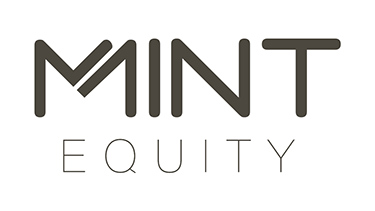If you’ve never purchased before or haven’t revisited your mortgage in years, it’s understandable that you may not be up to date with mortgage terminology. Turns out you’re not alone. In a national survey of 1,006 Australians, commissioned by State Custodians, has revealed that one in five (21%) admitted they didn’t understand 11 key mortgage terms.
Respondents were asked to define the terms “principal”, “interest”, “refinancing”, “line of credit”, “redraw facility”, “offset account”, “comparison rate”, “lenders mortgage insurance”, “bridging loan”, “split loan” and “portability”. Understanding financial terms can sometimes feel intimidating, but in a situation as important as your own finance, you should never be worried about asking for something to be explained.
One of the benefits of dealing with a mortgage broker like Mint Equity, is we understand that finance isn’t front of mind for everyone, and each person has a different level of experience when it comes to obtaining a home loan. We’re here to give you our expertise and help you through the process.
So, what does all this mortgage jargon mean? We’ll take a look at a few key mortgage terms.
Mortgage glossary
Principal and interest
Principal means the amount owning on a loan. For example, if you need to borrow $500,000 from the bank to buy a property, the $500,000 is considered to be the principal amount that you have to repay.
On top of the principal, is the interest charged by the bank for letting you borrow the $500,000. That’s right, they won’t just give money away for free.
You now have two choices on how you would like to pay the loan.
- Pay both the principal and interest which reduces your loan amount – known as a ‘Principal and interest’ loan or ‘P&I’ for short.
- Just pay the interest that accumulates, but not contribute to the principal amount owning – known as ‘Interest-only’ or ‘I/O’ for short.
There are many reasons and restrictions around both options. By taking option 1 and paying both the principal, you’ll reduce the total amount you owe, but your repayments will be higher.
Option 2, interest-only, is a little more difficult to get as lenders would prefer you pay down the debt and may only offer the interest-only option for 1-5 years. APRA has also initiated restrictions on the number of interest-only loan each lender can provide. Your repayments are generally lower, even though the interest rate is higher than a P&I loan, but the $500,000 debt doesn’t decrease. Interest-only options are popular with investors as they have other property associated costs that the rental income needs to cover. If you are an investor, you should also talk to your accountant to maximise tax effectiveness.
Mortgage terminology isn’t an everyday language for most people, so we’re here to help translate.
Refinancing
Refinancing is essentially changing your mortgage supplier to get a better rate, reduce your costs or to increase your borrowings. Because changing mortgage suppliers is a little more complex than changing your electricity supplier, you don’t want to do it too regularly. It can be a simple process with the help of a mortgage broker, and they will be able to see what savings you can make, and if there are any financial costs to you.
When refinancing, you essentially have to submit a new loan application and go through the full process again. This can put people off, but even just a 1% difference on your interest rate can make a huge difference to your mortgage repayments.
You may also want to renovate, extend or buy an investment property, so refinancing can help you with that, particularly if your property has increased in value.
But what if you have a fixed interest rate?
You can still refinance if you have a fixed interest rate. However, there may be economic costs associated with changing lenders and ‘breaking’ your existing loan contract. The costs generally depending on how much time is remaining on the fixed interest rate arrangement. Every lender is different in how they calculate the ‘break’ cost, and a simple phone call to your lender will help you find out those costs.
What is an offset account?
An offset account is helpful in reducing the interest you pay on your mortgage. By connecting an offset account to your home or investment loan account, any money that is in your offset account, reduces the loan amount, and you’ll only pay interest on that amount, not the original borrowed amount.
For example, if you borrowed $500,000 and you have $25,000 in your offset account, you’ll only pay interest on $475,000. It’s a great feature for people who receive bonuses, commissions or are expecting an inheritance. The key thing to remember is you need to select the right type of home or investment loan at the beginning to have an offset feature available, as not all loan products include this feature.
Need to know more?
Even we know mortgage jargon is extensive, and we’re still compiling our mortgage glossary, but here’s a link to what we’ve put together so far.
We’re here to help
Working with Mint Equity to help secure your finance is a great option rather than calling every lender to find out if they can help. We have access to over 40 lenders, with 100’s of different products – and we’ll work with you to find the one that fits. Our services are free of charge as we are remunerated by the lender you choose.


